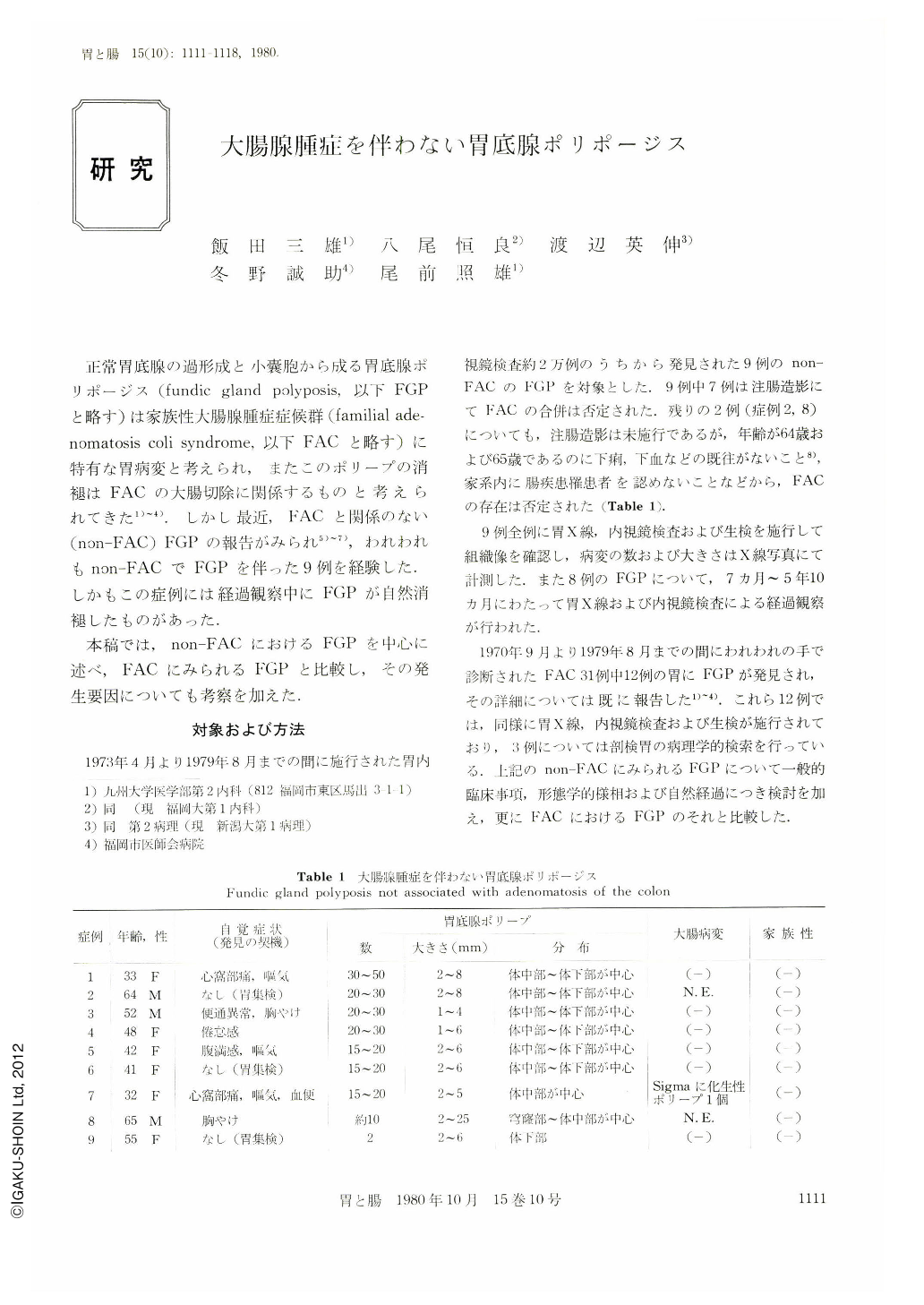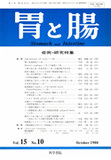Japanese
English
- 有料閲覧
- Abstract 文献概要
- 1ページ目 Look Inside
正常胃底腺の過形成と小囊
胞から成る胃底腺ポリポージス(fundic gland polyposis,以下FGPと略す)は家族性大腸腺腫症症候群(familial adenomatosis coli syndrome,以下FACと略す)に特有な胃病変と考えられ,またこのポリープの消褪はFACの大腸切除に関係するものと考えられてきた1)~4).しかし最近,FACと関係のない(non-FAC)FGPの報告がみられ5)~7),われわれもnon-FACでFGPを伴った9例を経験した.しかもこの症例には経過観察中にFGPが自然消褪したものがあった.
本稿では,non-FACにおけるFGPを中心に述べ,FACにみられるFGPと比較し,その発生要因についても考察を加えた.
We have reported previously that fundic gland polyposis consisting of simple hyperplasia of fundic glands seems to be the gastric lesion specific to familial adenomatosis coli syndrome. In this study, nine patients (group A) not associated with adenomatosis of the colon but with fundic gland polyposis were reported, and were compared with twelve patients (group B) associated with both lesions.
1) Age and sex: The average age was 48.0 years (32 to 65) in group A, and 25.3 years (11 to 41) in group B. Group A included 3 males and 6 females, while group B, 7 males and 5 females. The age of group A was significantly higher than that of group B (p=0.01).
2) Characteristics of polyps: Fundic gland polyposis in group A was most commonly distributed in the middle and lower part of the gastric body. These polyps were multiple (2 to 50 in number), measuring up to 8 mm in the greatest dimension, and sessile or subpedunculated with a smooth surface. Only one patient had three pedunculated and relatively large polyps. On the other hand, the number of polyps in group B was larger (over 100) than that of group A. In addition, the polyps in group B were sited either diffusely from the fornix to the lower part of the body or lacally in the fornix. Therefore, we found that it is possible to differentiate group A from group B only through x-ray examinations of the stomach.
3) Follow up of polyps: Eight patients in group A were followed up by x-ray examination of the stomach and gastro-fiberscopy. In five patients (32 to 55 years, female), multiple polyps disappeared or decreased in number and size in the course of seven months to about three years. The polyps of the remaining three patients (52 to 65 years, male) showed no remarkable change in number and size in the course of a year to about six years.

Copyright © 1980, Igaku-Shoin Ltd. All rights reserved.


